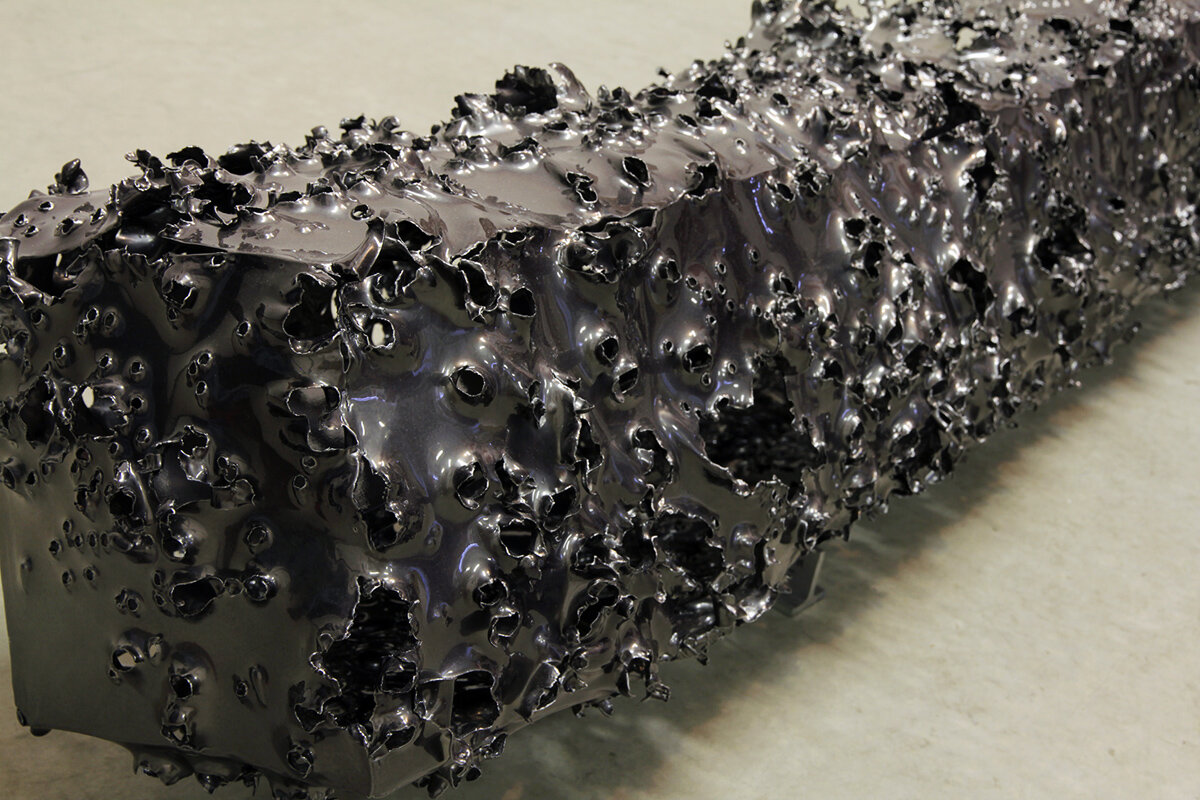
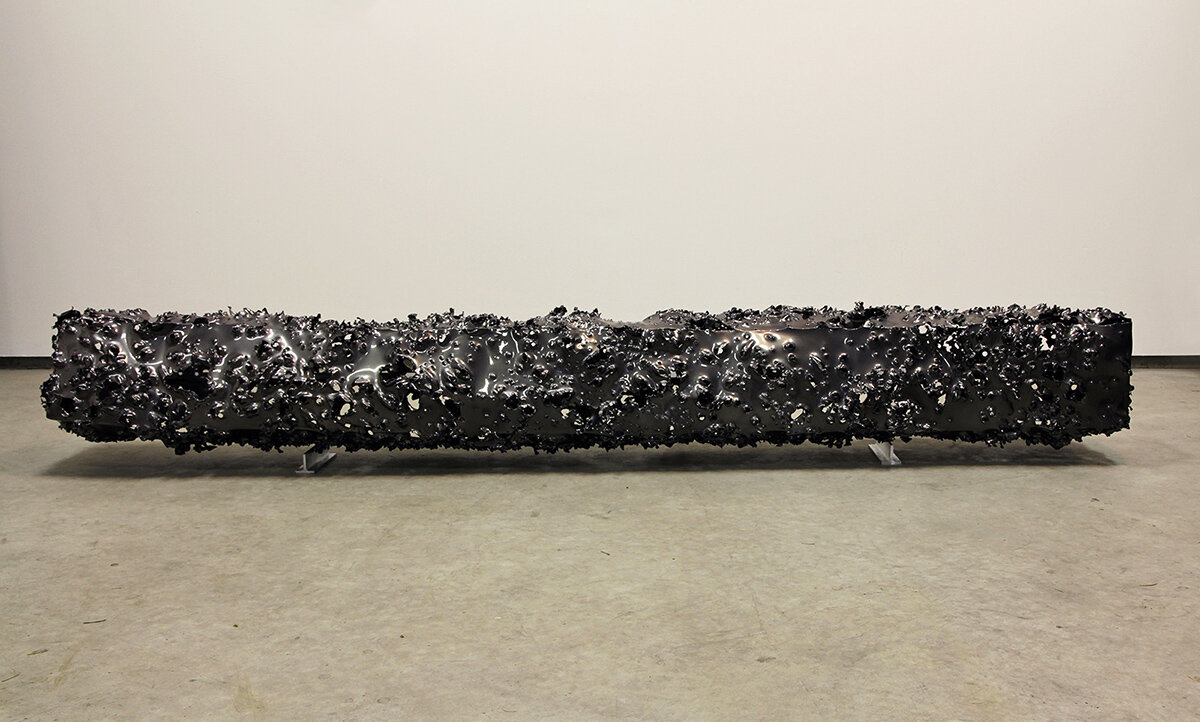
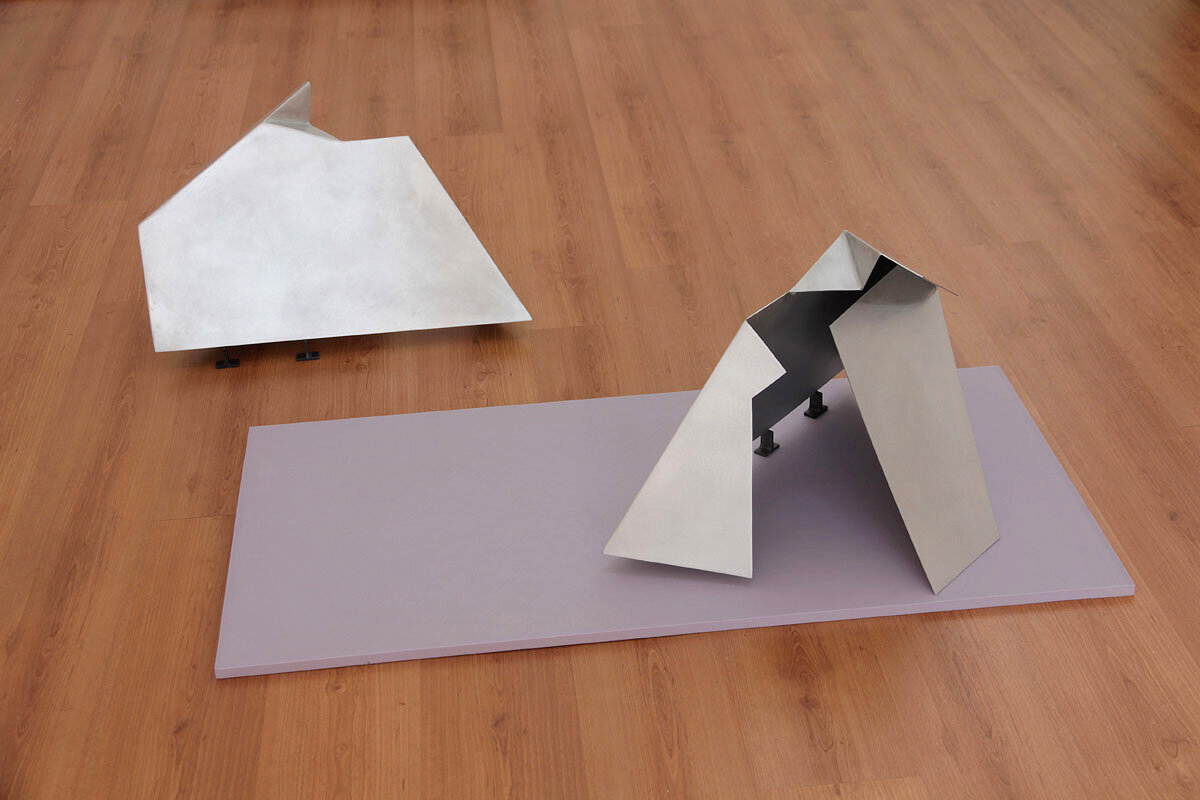
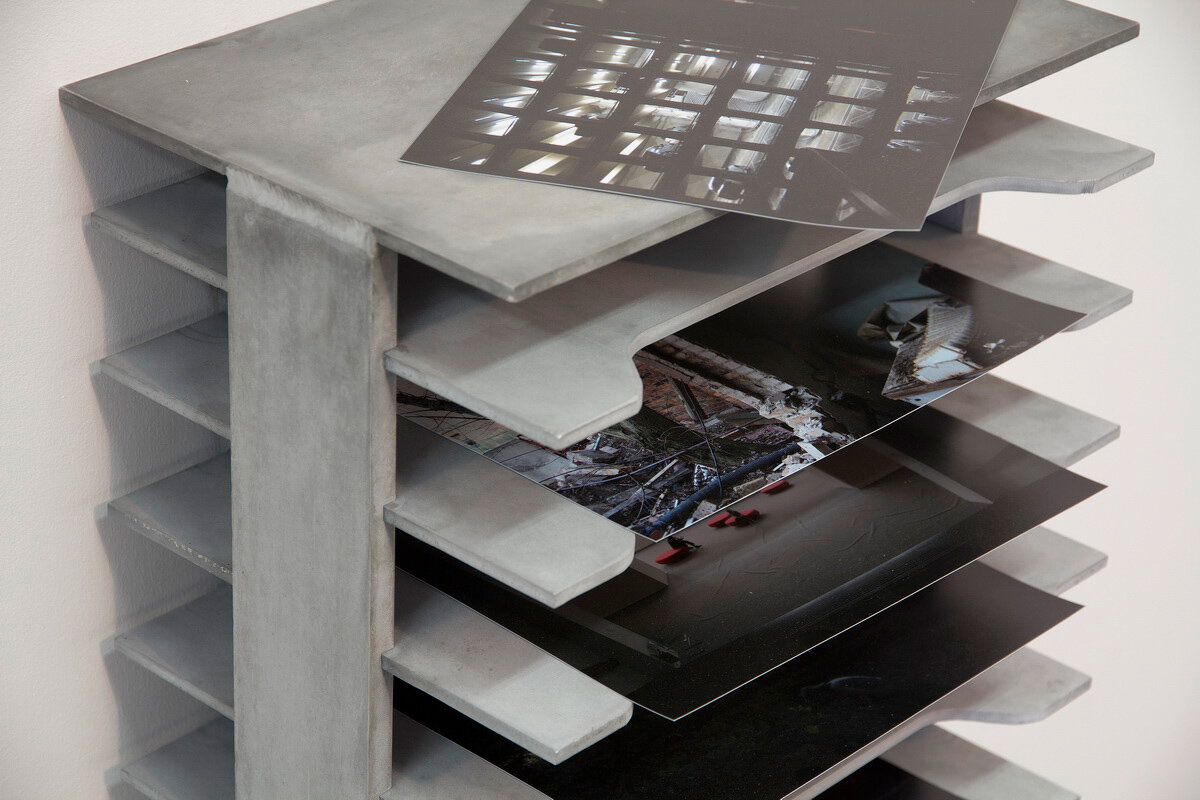
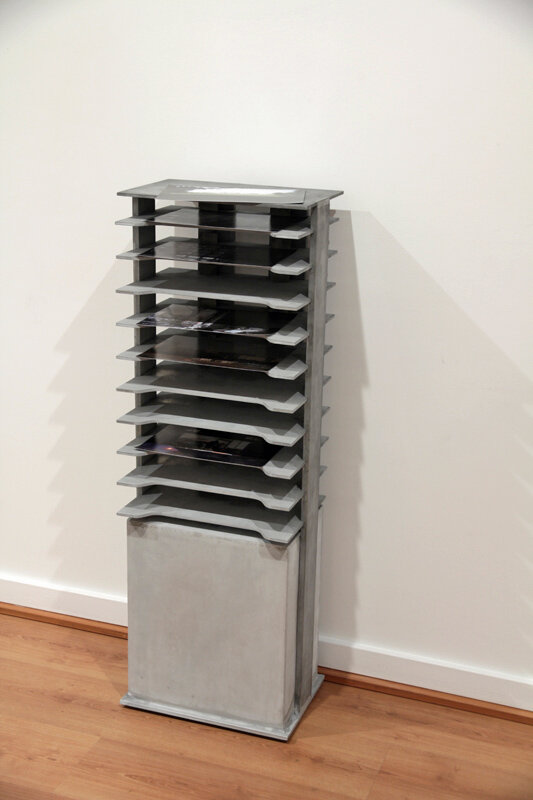
fallen and found
Daniel Laskarin
January 31 to March 8, 2014
“I remember a time when an exhibition was being discussed with Ad Reinhardt, the wonderful American abstract painter of what ultimately were almost completely black paintings. And Ad Reinhardt wanted to put a white wooden stanchion in front of his painting, because it was subject to a lot of public abuse, fingerprints and stuff like that. And the other nine artists in the show were sculptors, and we were joking with Ad Reinhardt, saying he was trying to become a sculptor, with his protective stanchion, and Ad said ‘Sculpture is what you trip over when you back away from a painting to look at it.’ And I immediately ‘Well, when you turn the lights out, Ad, the painting disappears, but you still trip over the sculpture!’ Well, you could almost say everything’s made of light. But all the materials in the world have different colours, and different chromaticisms, and it has many other properties, too. Just as we say that a painter is a ‘colourist,’ I think of myself as a ‘matterist.’ I try to deal with the varieties of matter in the way that a good painter deals with varieties of colour.” – Carl Andre (interview by William Furlong, recorded May 1995, from Audio Arts Magazine, Volume 16 Number 1, 1996)
In fallen and found, his fourth exhibition with Deluge Contemporary Art, Daniel Laskarin returns to a decades-old preoccupation with the role of the sculptor as matterist. In the eponymous works which comprise the show’s title and stack, as well as newer works from an ongoing narrative of small wall pieces, Laskarin seems to have reached the apotheosis of the considered haptic possibilities contained in the materiality of his artistic output. In fallen, a 7' rectangular log of steel has been aerated by double-ought buckshot to perform a kind of gaseous release of ineffable matter—whateveritis bubbling forth from its metallic containment, perhaps lighter than air. Although suggestive, from a distance, of something ancient and built up from accretion, fallen defies this assumption through the discreet feet which raise it slightly off the ground: resting on the opposite of its laurels for a current appraisal of its formal properties.
In awkward yet symbiotic relationship to each other, the twin effigies of welded and folded aluminum that comprise found are described by Laskarin as “odd things, neither resolvedly volume nor surface.” Despite the unpretentious surfaces—sandblasted on the interior, random orbital sanded on the exterior—their situationally compromised but materially uncompromising planes allow for a languid and alluring consideration of inside-ness and outside-ness, equally seductive possibilities in Laskarin’s hands.
Playing off the opacity and immateriality of photographic images, Laskarin has created a device for viewing them. The photographs themselves reside inside stack, but the sculpture is neither archival nor strictly speaking, storage. Above a low metal plinth, a small tower of openings hold the photos (which are happy to be disordered). Atop stack, the “roof” of this structure operates as a photographic viewing platform. The action of removing an image and placing it on the sculpture to inspect is instinctive. Through this simple intuitive gesture, the sculptural object passes the test of value, requisite but naturally integrated into the bodily experience of looking and conceptually capacious enough to contain worlds of permutable experience.
Born in Southern Ontario, but a long-time BC resident, Daniel Laskarin turned to visual art after a career in aviation and completed his MFA at UCLA in 1991. His artistic production is object-based, and uses a diverse range of media including photography and video, optics, robotics systems, installation and sound works, set design and public projections. Laskarin has been awarded large-scale public commissions in Vancouver and Seattle. He has exhibited extensively in Canada and the United States, as well as in the UK, France, Algeria and Brazil. He currently teaches sculpture at the University of Victoria, where he is Chair of the Department of Visual Arts.